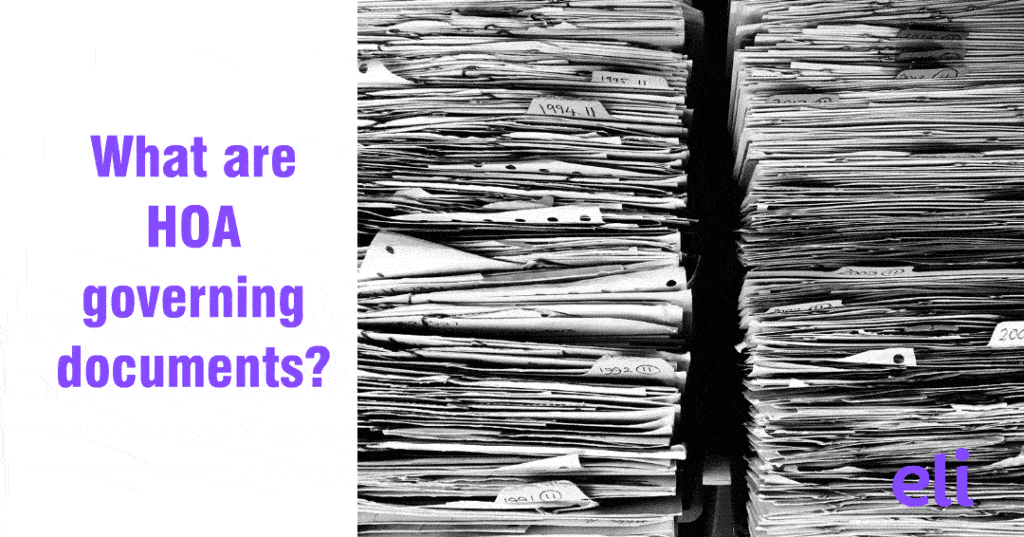HOA governing documents can vary by jurisdiction. These are likely to include Articles of Association, Bylaws, Declaration of CC&Rs, plus associated rules.
Governing Documents
- Articles of Association or Articles of Incorporation: The ‘articles’, as they are often known, create the legal entity. This sets the HOA name and initial contact person. The articles may also set out some procedures as this document is typically a precursor to the bylaws.
- Bylaws: Bylaws describe the mechanics of HOA management. It’s a fairly boring document but one that you will read if you find yourself in a state of conflict with the board. It sets out notification and voting procedures, and should also describe record-keeping procedures and the roles of directors.
- Declaration of CC&Rs: Commonly known as CC&Rs, these are the covenants, conditions and restrictions. CC&Rs set out the expectations on owners and residents as well as their guests. This is an important subject so we have a post on it here, and another post on common rules.
Records: Financial, Meeting Minutes & Reserve studies
Your HOA also keeps financial records (statements and budgets), minutes from board meetings and annual general meetings (AGMs). Finally, your HOA will fund reserve studies (also known as reserve reports) on common assets.
- Financial records: Annual financial statements should be audited; interim statements, which may be prepared monthly or quarterly, will not. Budgets are prepared to provide a clear indication to owners about how their dues will be spent.
- Minutes: Whenever there is a meeting of the board, minutes should be kept in accordance with the bylaws. Minutes set out who was present, what was discussed, and outcomes. The larger annual general meeting (AGM) is open to all owners. AGMs cover the budget, state of financial affairs, procedural matters, and other owner concerns. It is within minutes that most current, relevant issues about the health and harmony of the HOA are recorded so read them!
- Reserve studies: A reserve study sets out the expected life and replacement cost of key common assets. This could include roads, gates, parking, a clubhouse, tennis court or pool. If you live in a condo assets like elevators, gym, HVAC units, and the building envelope (roof/siding/windows) would also be covered. Do not underestimate the value of investing in infrastructure. If your HOA is fully funding the repair and replacement of capital items, it reduces the likelihood of a special assessment.
HOA governing documents may seem dull, but are important so pay attention when buying. Want to learn more about your HOA? Sign up and run a free Eli Report!
